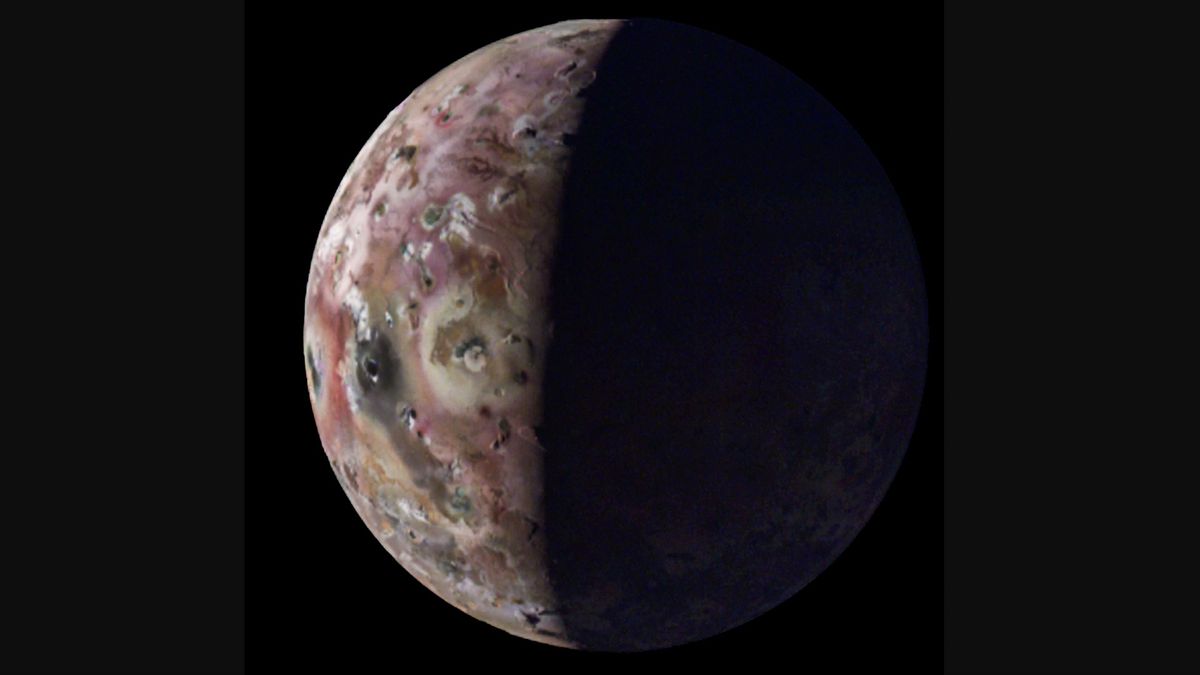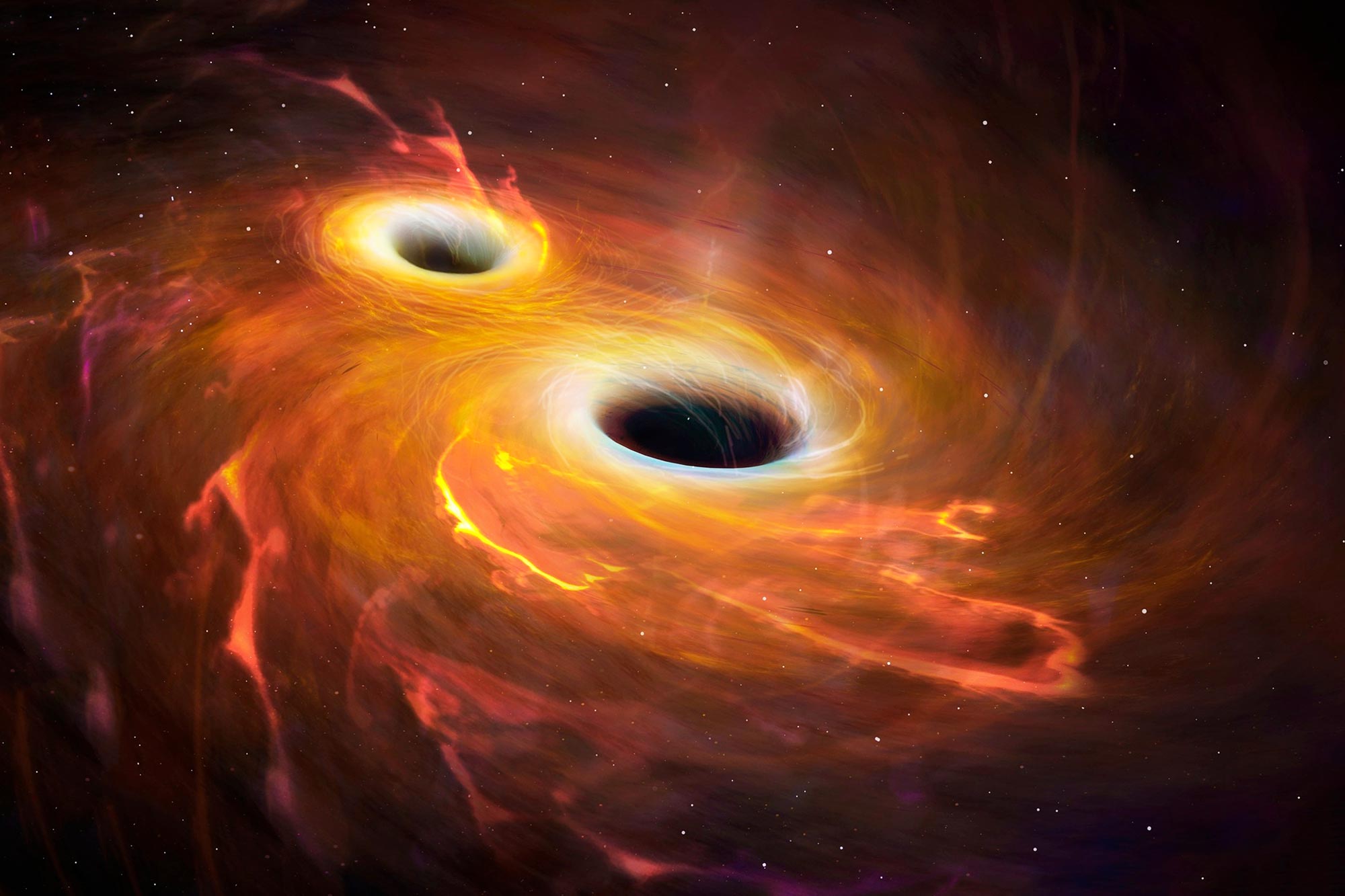Observatorium Sinar-X Chandra NASA telah mendeteksi dua pasang lubang hitam supermasif dalam siklus tabrakan di galaksi kerdil, bukti pertama dari pertemuan yang akan segera terjadi. Penemuan ini memberikan informasi penting tentang pertumbuhan lubang hitam di awal alam semesta.
- Milky Way, likely formed larger galaxies through collisions in the early Universe.
- These newly-discovered merging dwarf galaxies can be used as analogs for more distant ones that are too faint to observe.
- The dwarf galaxies are on collision courses and are found in the galaxy clusters Abell 133 and Abell 1758S.

Evidence for two pairs of supermassive black holes in dwarf galaxies on collision courses has been found with Chandra. The two pairs are shown in X-rays from Chandra and optical light from the Canada-France-Hawaii telescope. The merger on the left is in a late stage and was given the single name of Mirabilis. The other merger is in the early stages and the two dwarf galaxies are named Elstir (bottom) and Vinteuil (top). Astronomers think that dwarf galaxies – those about 20 times less massive than the Milky Way – grow through mergers with others. This is an important process for galaxy growth in the early Universe and this discovery provides examples for scientists to study in greater detail. Credit: X-ray: NASA/CXC/Univ. of Alabama/M. Micic et al.; Optical: International Gemini Observatory/NOIRLab/NSF/AURA
A new study using NASA’s Chandra X-ray Observatory has tracked two pairs of supermassive black holes in dwarf galaxies on collision courses. This is the first evidence for such an impending encounter, providing scientists with important information about the growth of black holes in the early Universe.
By definition, dwarf galaxies contain stars with a total mass less than 3 billion Suns — or about 20 times less than the Milky Way. Astronomers have long suspected that dwarf galaxies merge, particularly in the relatively early Universe, in order to grow into the larger galaxies seen today. However, current technology cannot observe the first generation of dwarf galaxy mergers because they are extraordinarily faint at their great distances. Another tactic — looking for dwarf galaxy mergers closer by — had not been successful to date.
Studi baru mengatasi tantangan ini dengan melakukan survei sistematis terhadap pengamatan sinar-X mendalam Chandra dan membandingkannya dengan data inframerah dari Wide Infrared Survey Explorer (WISE) NASA dan data optik dari Teleskop Kanada, Prancis, dan Hawaii (CFHT).
Chandra sangat berharga dalam penelitian ini karena material di sekitar lubang hitam dapat dipanaskan hingga jutaan derajat, menghasilkan sinar-X dalam jumlah besar. Tim mencari pasangan sumber sinar-X terang di galaksi kerdil yang bertabrakan sebagai bukti adanya dua lubang hitam, dan menemukan dua contoh.

Bukti sepasang lubang hitam supermasif telah ditemukan di galaksi kerdil dalam siklus tabrakan dengan Chandra. Pasangan ini terlihat dalam sinar-X dari Chandra dan cahaya optik dari Teleskop Kanada-Prancis-Hawaii. Penggabungan di sebelah kiri berada pada tahap akhir dan telah diberi nama individu Mirabilis. Penggabungan lainnya masih dalam tahap awal dan dua galaksi kerdil diberi nama Elstir (bawah) dan Vinteuil (atas). Para astronom percaya bahwa galaksi kerdil – yang berukuran 20 kali lebih kecil dari Bima Sakti – tumbuh melalui penggabungan dengan yang lain. Ini adalah proses penting untuk pertumbuhan galaksi di alam semesta awal dan penemuan ini memberikan contoh bagi para ilmuwan untuk dipelajari lebih detail. Kredit: Sinar-X: NASA/CXC/Univ. Alabama / m. Micic et al.; Optik: Internasional Observatorium Gemini/NOIRLab/NSF/AURA
Satu pasang berada di gugus galaksi Abell 133 yang terletak 760 juta tahun cahaya dari Bumi, terlihat pada gambar komposit di sebelah kiri. Data sinar-X Chandra berwarna merah muda dan data optik dari CFHT berwarna biru. Sepasang galaksi kerdil ini tampaknya berada di tahap akhir penggabungan, memperlihatkan ekor panjang yang disebabkan oleh efek pasang surut dari tabrakan. Para penulis studi baru menamakannya Mirabilis, setelah terancam punah[{” attribute=””>species of hummingbird known for their exceptionally long tails. Only one name was chosen because the merger of two galaxies into one is almost complete. The two Chandra sources show X-rays from material around the black holes in each galaxy.

X-ray and optical composite of Mirabilis. Credit: X-ray: NASA/CXC/Univ. of Alabama/M. Micic et al.; Optical: International Gemini Observatory/NOIRLab/NSF/AURA
The other pair was discovered in Abell 1758S, a galaxy cluster about 3.2 billion light-years away. The composite image from Chandra and CFHT is on the right, using the same colors as for Mirabilis. The researchers nicknamed the merging dwarf galaxies “Elstir” and “Vinteuil,” after fictional artists from Marcel Proust’s “In Search of Lost Time”. Vinteuil is the galaxy on the top and Elstir is the galaxy on the bottom. Both have Chandra sources associated with them, again from X-rays from material around the black holes in each galaxy. The researchers think these two have been caught in the early stages of a merger, causing a bridge of stars and gas to connect the two colliding galaxies from their gravitational interaction.

X-ray and optical composite of Elstir & Vinteuil. Credit: X-ray: NASA/CXC/Univ. of Alabama/M. Micic et al.; Optical: International Gemini Observatory/NOIRLab/NSF/AURA
The details of merging black holes and dwarf galaxies may provide insight to our Milky Way’s own past. Scientists think nearly all galaxies began as dwarf or other types of small galaxies and grew over billions of years through mergers. Follow-up observations of these two systems will allow astronomers to study processes that are crucial for understanding galaxies and their black holes in the earliest stages of the Universe.
Sebuah makalah yang menjelaskan temuan ini diterbitkan dalam edisi terbaru itu[{” attribute=””>Astrophysical Journal.
Reference: “Two Candidates for Dual AGN in Dwarf-Dwarf Galaxy Mergers” by Marko Mićić, Olivia J. Holmes, Brenna N. Wells and Jimmy A. Irwin, 22 February 2023, The Astrophysical Journal.
DOI: 10.3847/1538-4357/aca1bb
The authors of the study are Marko Micic, Olivia Holmes, Brenna Wells, and Jimmy Irwin, all from the University of Alabama at Tuscaloosa.
NASA’s Marshall Space Flight Center manages the Chandra program. The Smithsonian Astrophysical Observatory’s Chandra X-ray Center controls science operations from Cambridge, Massachusetts, and flight operations from Burlington, Massachusetts.

“Penggemar bir. Sarjana budaya pop yang setia. Ninja kopi. Penggemar zombie jahat. Penyelenggara.”







More Stories
Pesawat luar angkasa Juno milik NASA menangkap pemandangan menakjubkan dari bulan vulkanik Jupiter, Io (video)
Inti Pluto kemungkinan besar tercipta dari tabrakan kuno
Penemuan mekanisme baru untuk memori DNA